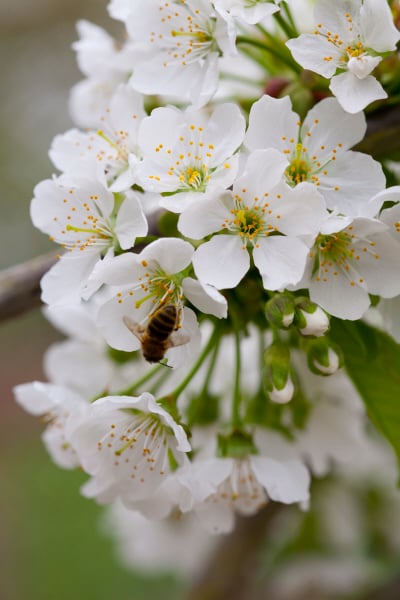Size
Ultimate height
4–8 metresTime to ultimate height
10–20 yearsUltimate spread
2.5–4 metresGrowing conditions
Moisture
Moist but well–drained, Well–drainedpH
Acid, Alkaline, NeutralColour & scent
| Stem | Flower | Foliage | Fruit | |
| Spring | White | Green | ||
|---|---|---|---|---|
| Summer | Green | Red | ||
| Autumn | Orange Red | |||
| Winter |
Position
- Full sun
Aspect
South–facing or West–facing
Exposure
Sheltered Hardiness
H6Botanical details
- Family
- Rosaceae
- Native to GB / Ireland
- No
- Foliage
- Deciduous
- Habit
- Bushy
- Genus
Prunus can be deciduous or evergreen trees or shrubs with showy flowers in spring, and often good autumn foliage colour. Some have edible fruit in autumn, and a few species have ornamental bark
- Name status
Unresolved
How to grow
Cultivation
Grow in moderately fertile soil in full sun. Cherries are best suited to fan-training so they can be netted against bird damage and protected from frosts. See sweet cherry cultivation for further advice
Propagation
Propagate by chip budding or grafting on clonal rootstock for fruit
Suggested planting locations and garden types
- Cottage and informal garden
- Wildlife gardens
- City and courtyard gardens
- Wall side borders
- Edible fruit
Pruning
Train fan-trained trees in spring. Prune established fans and carry out routine pruning on established cherry trees when harvesting the fruits in summer
Pests
Protect trees from birds that damage buds and eat the fruit. May suffer from cherry blackfly and other aphids, leaf-mining moths, winter moth and other caterpillars
Diseases
May be susceptible to peach leaf curl, silver leaf, bacterial canker, blossom wilt and honey fungus
Get involved
The Royal Horticultural Society is the UK’s leading gardening charity. We aim to enrich everyone’s life through plants, and make the UK a greener and more beautiful place.
